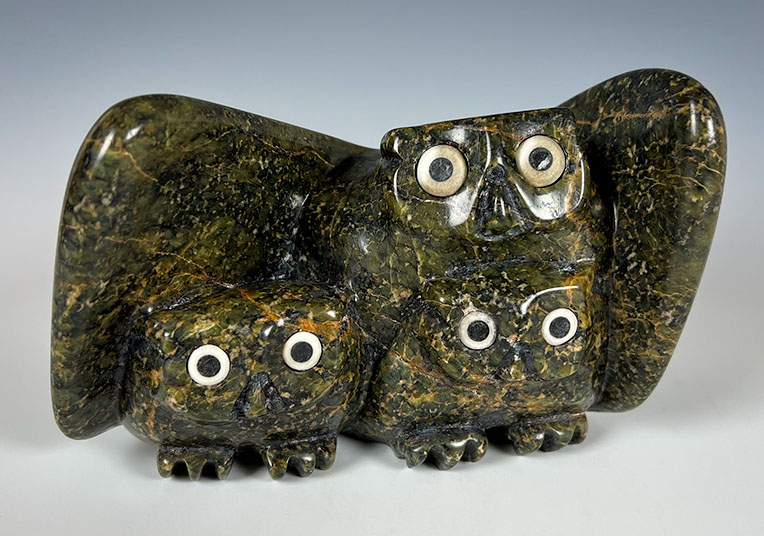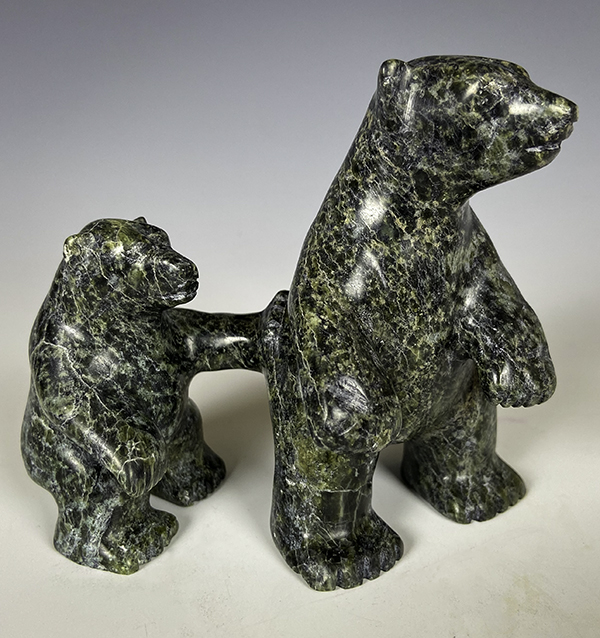Perhaps it is the long dark days of the Arctic winter which nourishes the fertile imagination of the Alaskan Native artist. Using an unlikely array of animal materials, Alaskan artists have created several unique art forms including; woven baleen baskets, whale bone and walrus ivory sculpture.
Once grouped together as “Eskimos” these Northern peoples from the Arctic are now acknowledged as culturally separate groups. Beginning in the far north and west of Alaska are the Inupiaq people, to the south of them along the coastline are the Central Yup’ik and further west on Saint Lawrence Island and in Russia are the Siberian Yup’ik. Along the Aleutian Island chain the Aleut make their home. The Alutiiq Eskimo people who inhabit the Alaska Peninsula and Kodiak Island are close relatives.
Ethnically and culturally separate are the Athabascan of interior Alaska, known for the bead work and birchbark baskets. Although located coastally in Southeast Alaska along the Alaskan “Panhandle,” the Haida and Tlingit are considered “Northwest Coast” Native people rather than “Northern Alaskan” Natives. Their totem poles, masks, argillite and wood carvings are internationally recognized. Wood, scarce to the northern arctic, doesn’t figure into “Eskimo” artwork.


